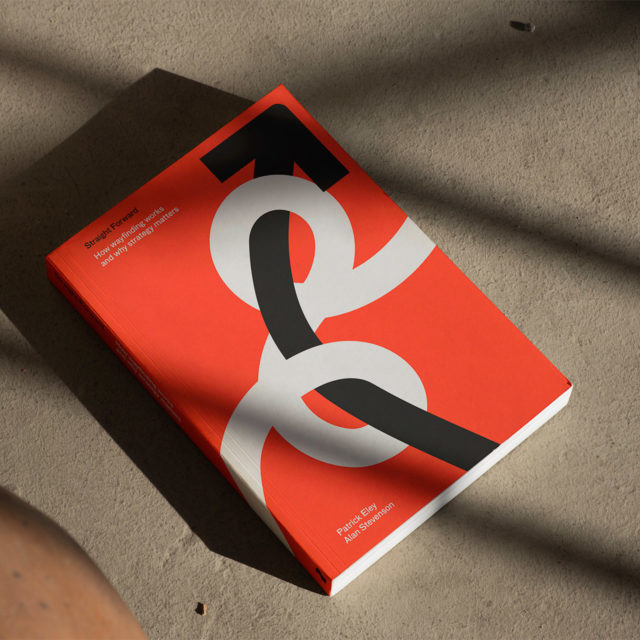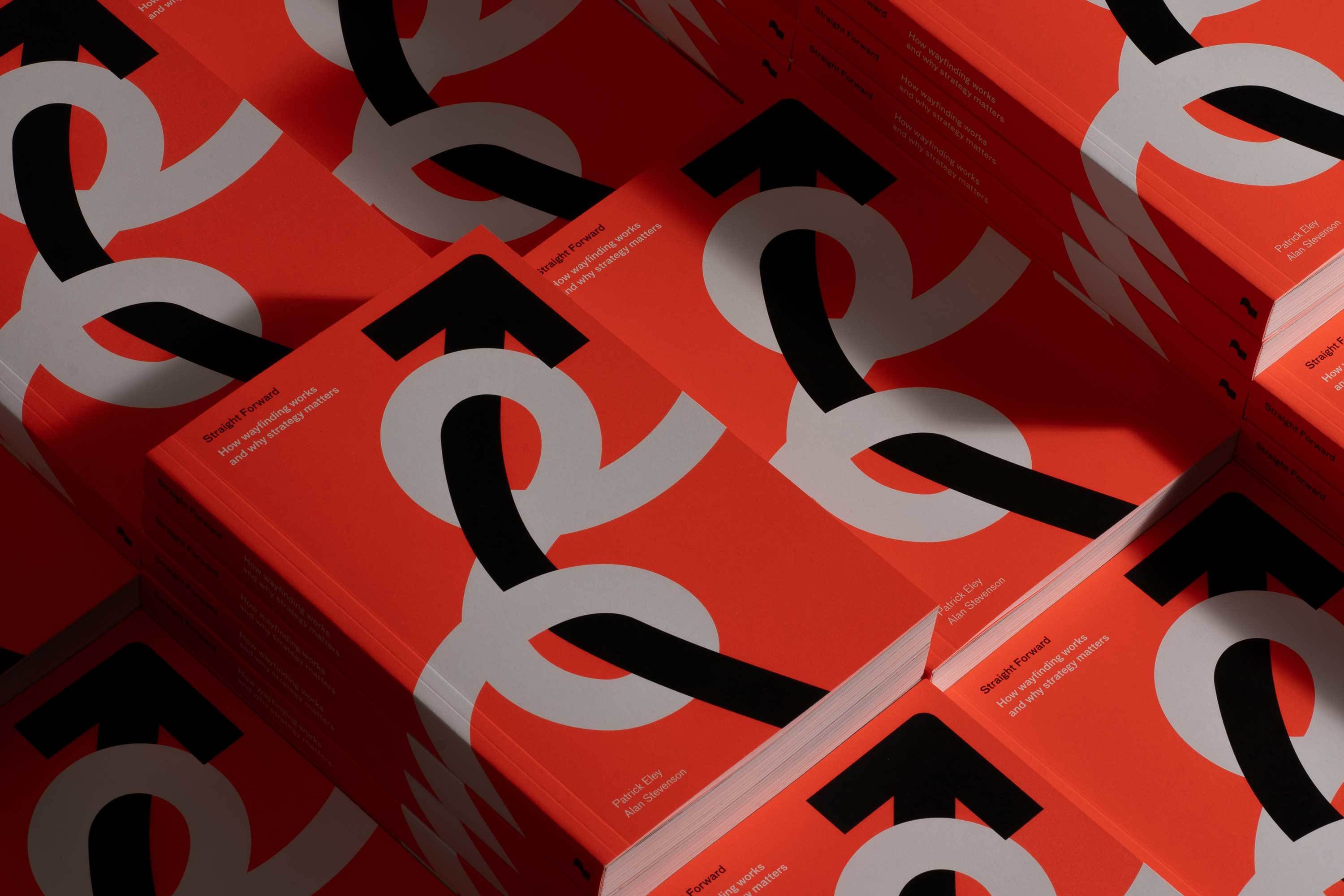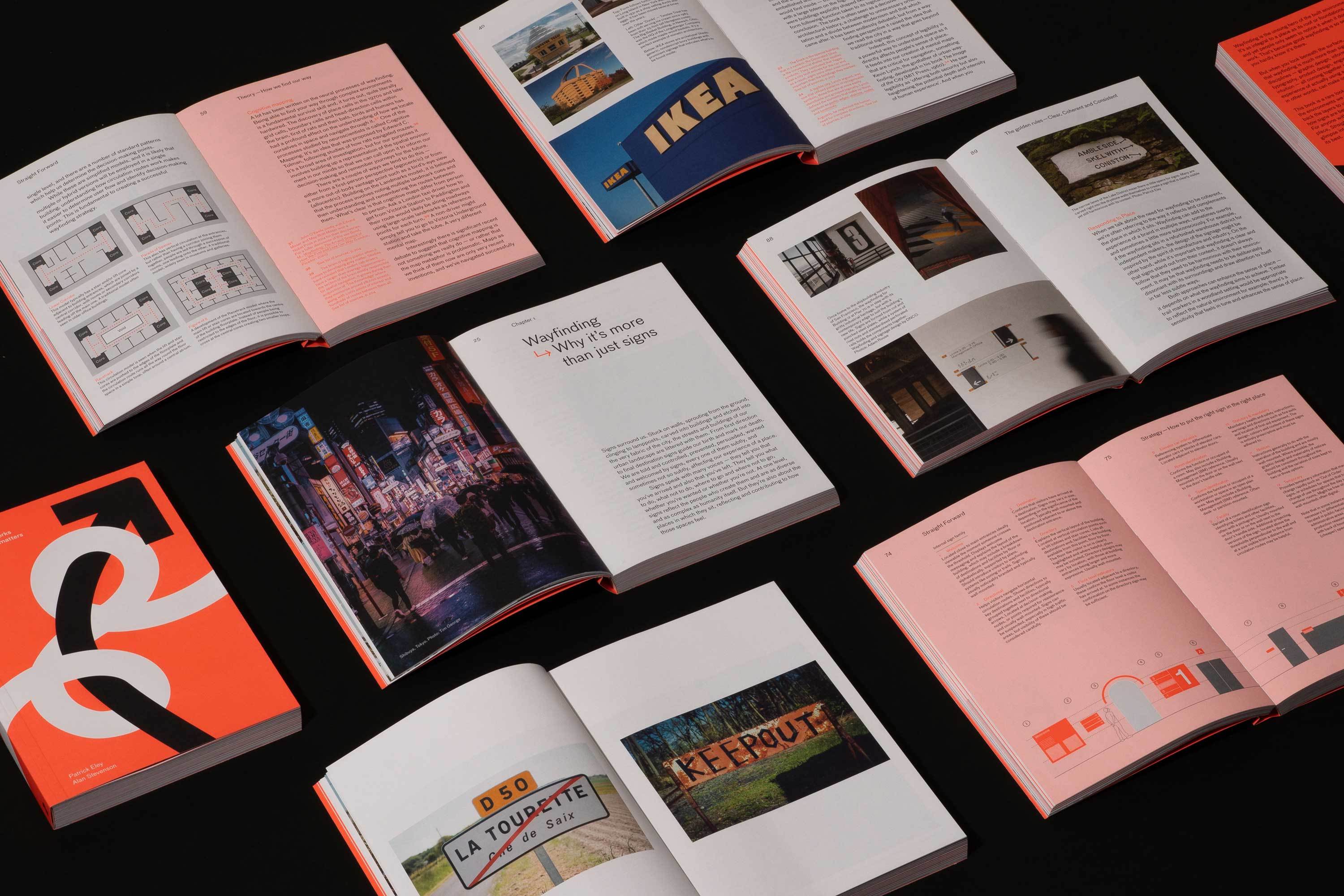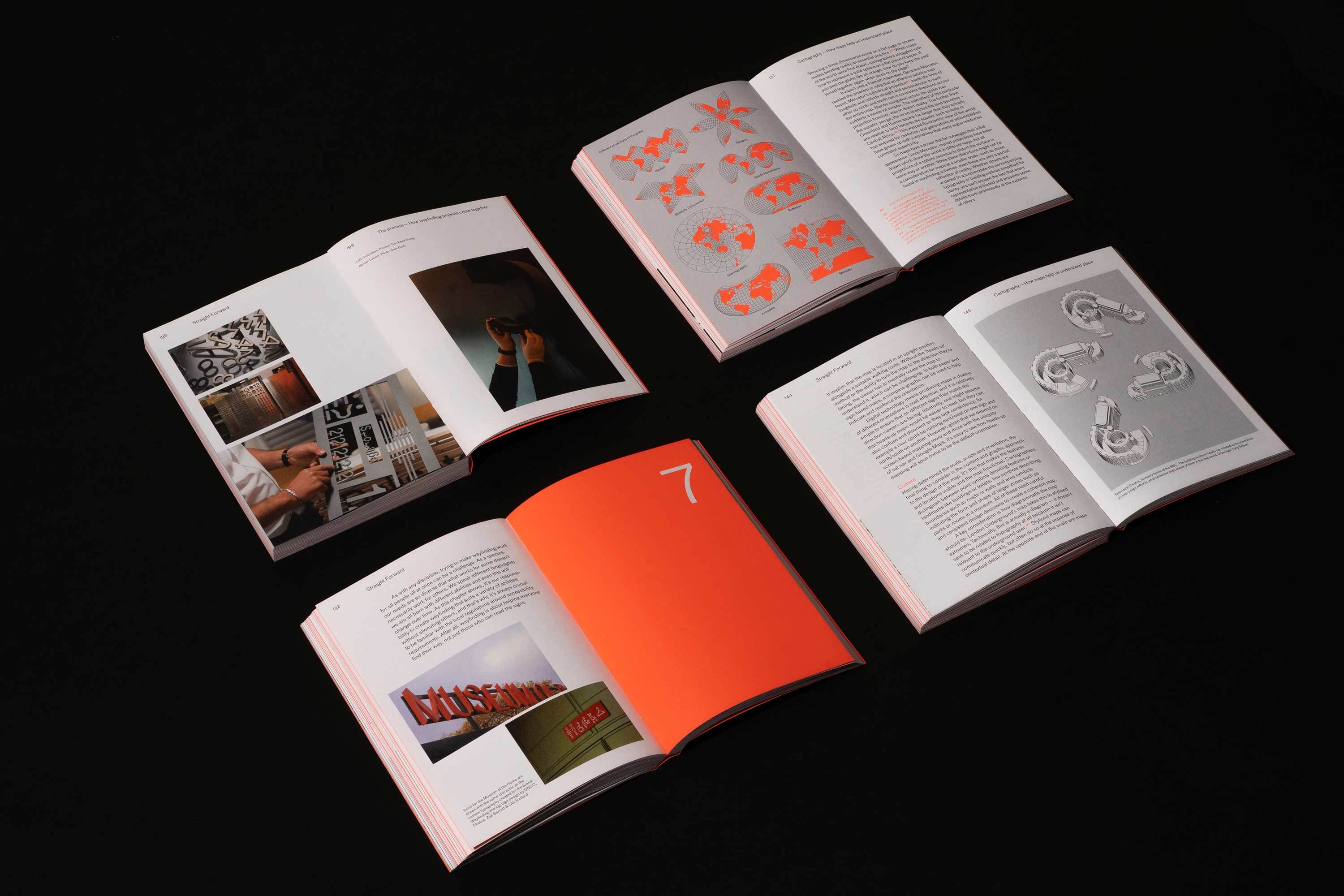Straight Forward
How wayfinding works and why strategy matters
£25.00 — free UK postage
Sold out!

Wayfinding is the unsung hero of the built environment. It’s as integral to a place as its roof or foundations, and yet people only seem to notice it when it doesn’t work. That’s because good wayfinding is so seamless, that you hardly know it’s there.
But when you look beneath the surface, you quickly see that wayfinding is much more than signs. It’s multiple disciplines — graphic design, information design, typography, product design, engineering, architecture, intuition — all coming together in harmony to define the experience of actually using an environment. Wayfinding, in other words, can make or break a place.
This book is a rare look into the thought process behind the environments we walk through every day. It peels back the layers to understand how humans navigate, how signs are best designed, where they go and why. For anyone with a professional or personal interest in place, Straight Forward is an engaging and informative glimpse into the art and mechanics of wayfinding at its best.
KEEP OUT. The meaning is clear. It’s impossible to misinterpret the words. After all, the letters are bright red, 10 feet high and painted in heavy, building-sized capitals. Indeed the sign is pretty hard to miss, but that’s very much the point.
Signs are conversations between people, and like all conversations they can be quiet and discreet or loud and abrasive. They can be funny, uplifting and kind: a gentle nudge in the right direction and a guiding hand on your elbow through the confusion. Or they can be sharp, threatening and mean. From a passive aggressive fridge note and the stomach-churning instructions of border control to the ‘welcome home’ on a door mat, signs engender all sorts of emotions and have a very real effect on how we feel about a place.
To understand the importance of wayfinding in our built environment, just imagine the Louvre Museum in Paris in the middle of August. Now imagine it without a single piece of signage. Imagine the busiest museum in the world, which welcomes up to 30,000 visitors a day, and the hoards of people scrambling to find the way out, the Mona Lisa or the toilet, without any way of knowing how to get there.
Wherever people gather, wayfinding can be the difference between order and chaos. It’s the unsung hero of the public realm, but to be effective it needs a strategy. Because when you work with places you can’t just plaster them with signs and hope that people will find their way around and feel good about it. You can’t just ignore them either — to be lost isn’t only frustrating, it can be fatal. Creating successful wayfinding means thinking about architecture, graphic design, information design, product design, engineering and human behaviour. It’s a fascinating and complex business.
So after nearly 50 years combined experience we are sharing our joy, wisdom and insight for this crucial piece of the place-creating puzzle. We’ve broken down the fundamentals of wayfinding, from theory to design and from physical to digital, in an end-to-end guide to the art and mechanics of getting people where they need to go. And it’s straight forward.
| Size | 155 x 220mm |
| Pages | 208 |
| Binding | OTA bound |
| Paper | 115gsm Munken Print White 15 |
| CMYK & 1 PMS throughout, litho | |
| ISBN | 978-1-9998231-3-9 |


